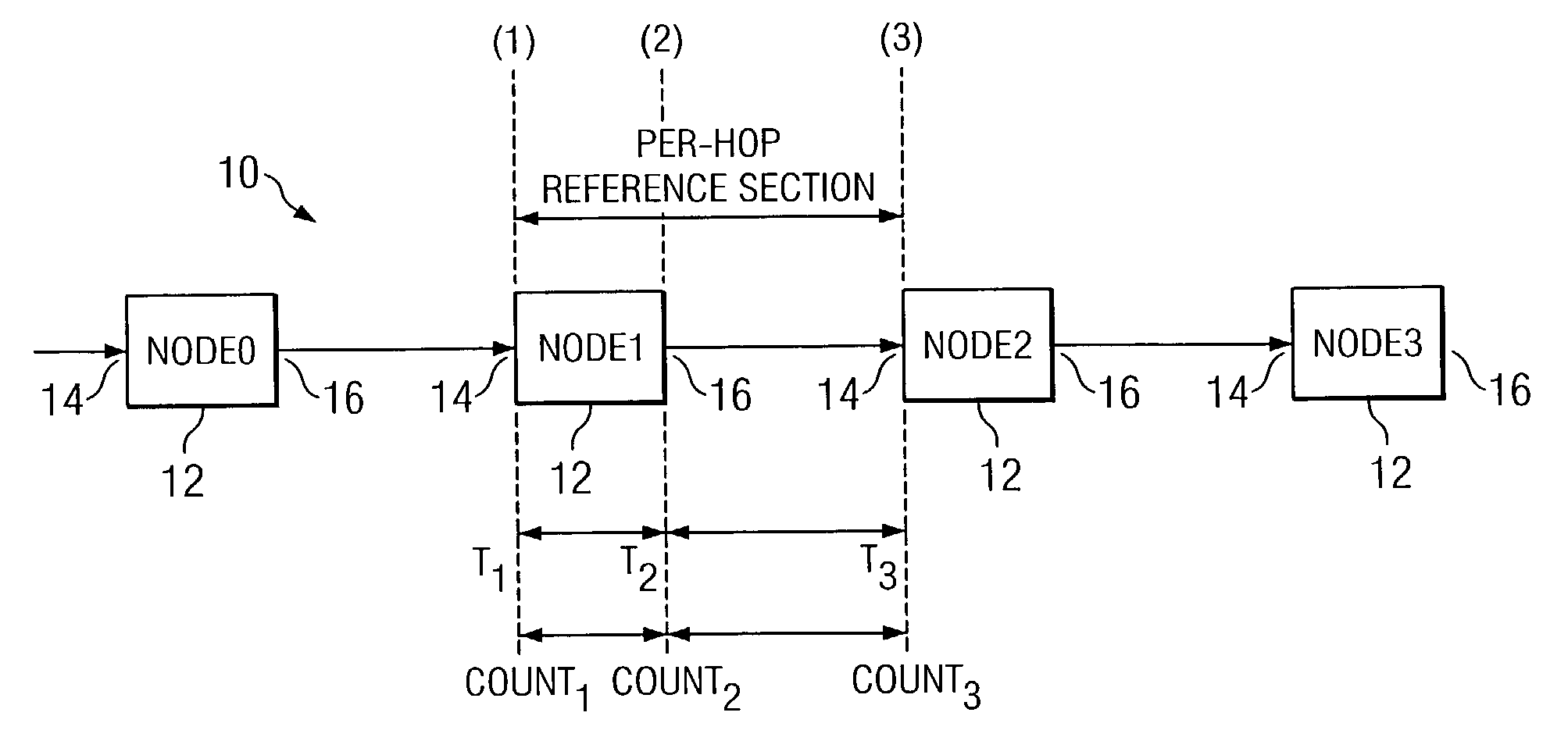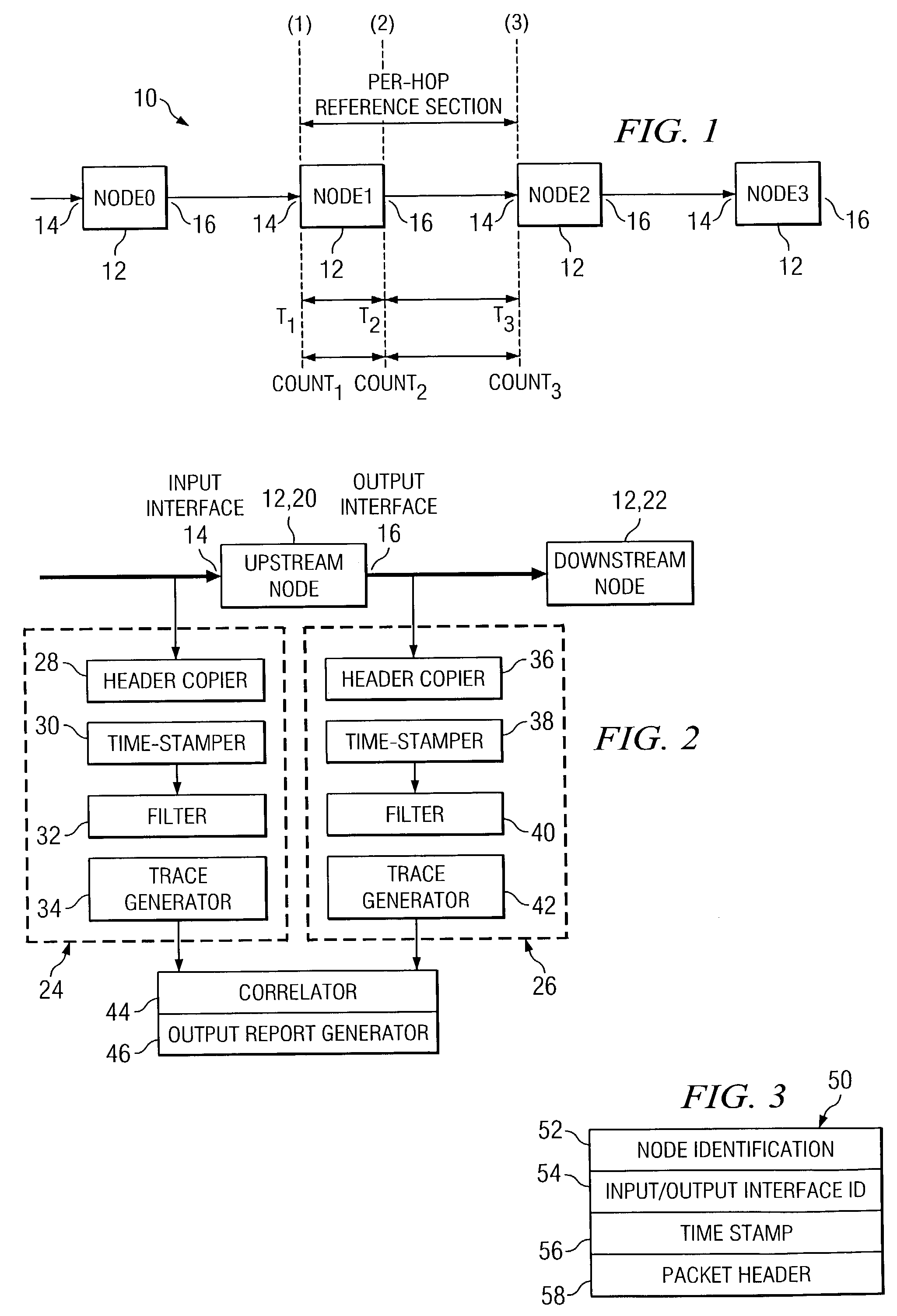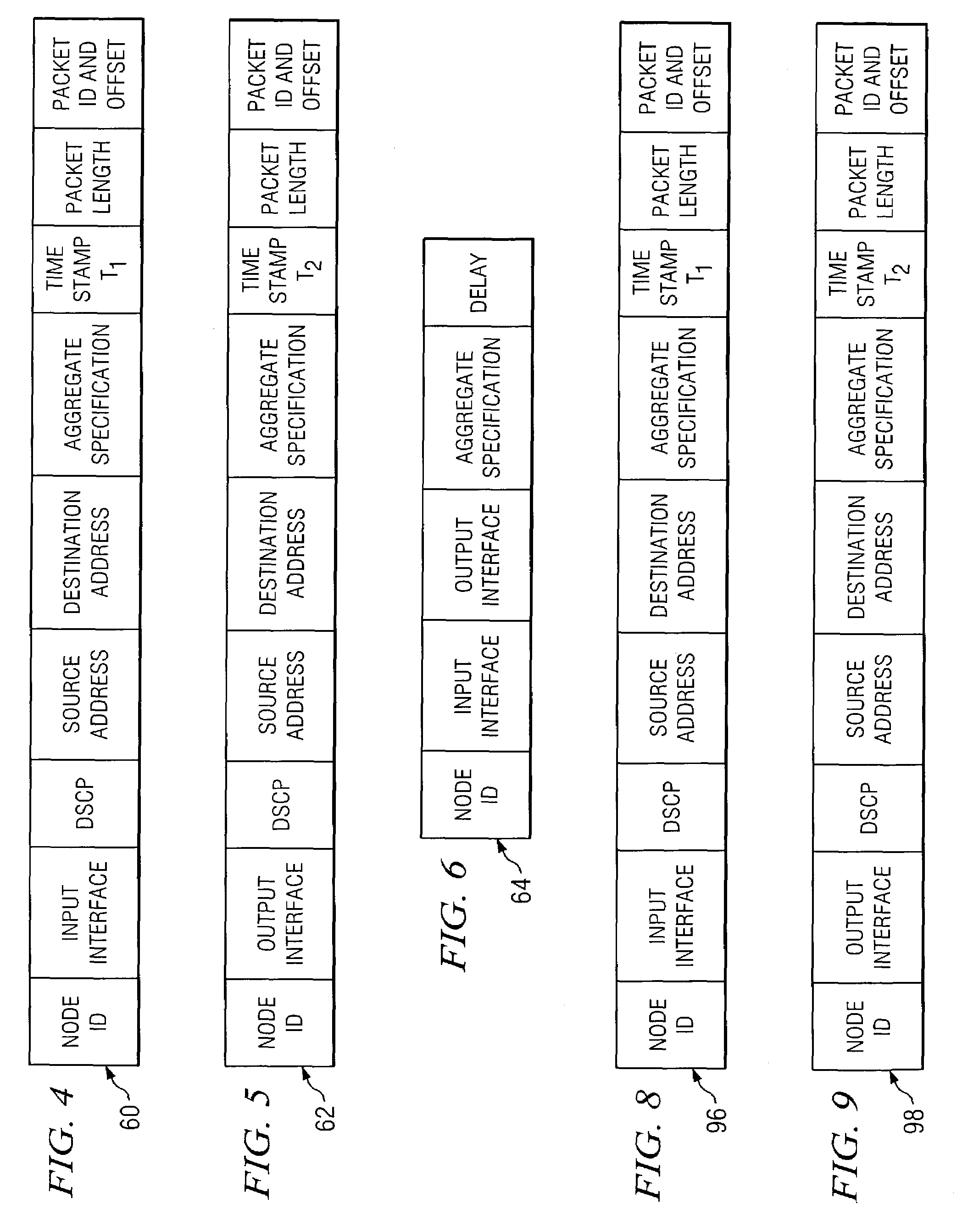Measurement architecture to obtain per-hop one-way packet loss and delay in multi-class service networks
a multi-class service network and measurement architecture technology, applied in the field of telecommunications, can solve the problems of ineffective cost-effective or network resource utilization, factor challenges the validity of halving, and introduces excessive complexity
- Summary
- Abstract
- Description
- Claims
- Application Information
AI Technical Summary
Benefits of technology
Problems solved by technology
Method used
Image
Examples
Embodiment Construction
[0033]The present invention is best understood in relation to FIGS. 1-13 of the drawings, like numerals being used for like elements of the various drawings.
[0034]FIG. 1 illustrates a reference model for describing terms used in computing a per-hop one-way delay in a multi-class service network. FIG. 1 shows a network 10 with a plurality of network nodes 12 (shown individually as Node0, Node1, Node2 and Node3). In the illustrated embodiment, data flows sequentially through the nodes, arriving at each node's input interface 14 and departing at each node's output interface 16.
[0035]Looking specifically at Node1, a data packet arrives at the input interface of the node 12 at time T1 and leaves at the output interface 16 of the node 12 at time T2. At time T3, the packet that was output from Node1 at time T2 arrives at the input interface 14 of Node2.
[0036]The “Per-Hop Reference Section” is defined between two adjacent nodes with a unidirectional link connecting them. The reference start...
PUM
 Login to View More
Login to View More Abstract
Description
Claims
Application Information
 Login to View More
Login to View More - R&D
- Intellectual Property
- Life Sciences
- Materials
- Tech Scout
- Unparalleled Data Quality
- Higher Quality Content
- 60% Fewer Hallucinations
Browse by: Latest US Patents, China's latest patents, Technical Efficacy Thesaurus, Application Domain, Technology Topic, Popular Technical Reports.
© 2025 PatSnap. All rights reserved.Legal|Privacy policy|Modern Slavery Act Transparency Statement|Sitemap|About US| Contact US: help@patsnap.com



